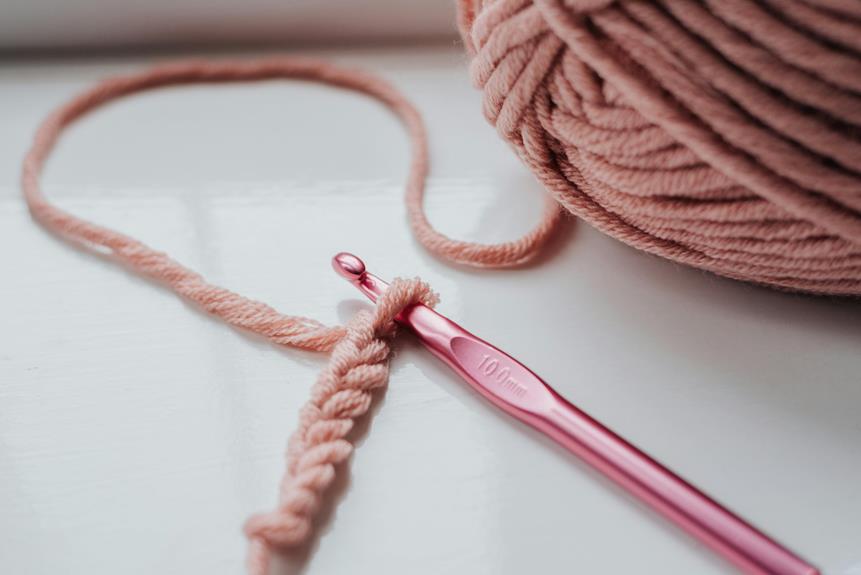If you've noticed your favorite fabrics losing their luster, you might be wondering how to bring them back to life without resorting to harsh chemicals. Fortunately, there are several DIY solutions that utilize common household items to restore color and vibrancy. From vinegar soaks to natural dyeing techniques, these methods can be both effective and eco-friendly. But which approach fits your needs best, and what unexpected results could you achieve? Explore the options that can transform your faded fabrics into something you'll be proud to display once again.
Table of Contents
Key Takeaways
- Soak faded fabrics in a vinegar-water solution for 30 minutes to help restore color vibrancy.
- Create a baking soda paste, apply it to faded areas, and rinse after 15 minutes for rejuvenation.
- Brew strong coffee or tea and soak dark fabrics for an hour to enhance their color.
- Add one cup of salt to the wash cycle to help set colors and enhance fabric brightness.
Understanding Fabric Fading
Fabric fading occurs when fibers lose their color due to exposure to sunlight, washing, or wear, impacting the overall appearance of your favorite items. You might notice that vibrant colors turn dull over time, making a once-bright shirt look washed out.
Sunlight is one of the leading culprits; UV rays break down the dye molecules in fabrics, especially in items left in direct sunlight for extended periods.
Washing can also contribute to fading, particularly if you use harsh detergents or wash in hot water. The friction during the wash cycle can cause fibers to break down, leading to color loss. Additionally, fabrics made from natural fibers like cotton or linen tend to fade faster than synthetic ones.
Wear and tear from regular use can exacerbate fading, as abrasion against other surfaces can strip away color. For some fabrics, like denim, this fading can create a desirable vintage look, but for others, it's less appealing.
Understanding these factors is essential in choosing how to care for your fabrics, helping you maintain their original beauty for as long as possible.
Home Remedies for Restoration
To bring back the vibrancy of your faded fabrics, you can try several effective home remedies that restore color without damaging the material.
One popular method involves using white vinegar. Mix one cup of vinegar with a bucket of water and soak the faded fabric for about 30 minutes. Rinse it well, and you'll notice an improvement in color.
Another remedy is baking soda. Create a paste with water and baking soda, then apply it to the faded areas. Let it sit for at least 15 minutes before rinsing. This can help revive the colors while also removing any odors.
If you have black or dark fabrics, consider using coffee or tea. Brew a strong batch, let it cool, and soak the fabric for about an hour. Rinse thoroughly to avoid any staining.
Lastly, salt can be a great option as well. Add a cup of salt to your wash cycle to help set colors and enhance vibrancy.
These simple home remedies can breathe new life into your favorite fabrics, keeping them looking fresh and vibrant for longer.
Natural Dyeing Techniques
Reviving your faded fabrics can be easily achieved through natural dyeing techniques that utilize everyday ingredients. By harnessing the colors found in nature, you can breathe new life into your old textiles while avoiding harsh chemicals.
Here's a quick guide to some common natural dye sources you can use:
- Avocado Pits and Skins: These create a lovely blush pink hue. Simply simmer the pits and skins in water, then strain the liquid before adding your fabric.
- Turmeric: This vibrant yellow spice can yield a bright golden color. Mix turmeric powder with water and boil your fabric in the solution for a warm tone.
- Coffee or Tea: For a rich, earthy color, use brewed coffee or tea. Soak your fabric for a few hours or even overnight for a deeper shade.
- Red Cabbage: This vegetable can produce various shades of blue to purple depending on the pH level. Boil chopped cabbage in water, strain, and soak your fabric for stunning results.
Experiment with these options, and you'll find the perfect way to refresh your faded fabrics!
Fabric Paint Applications
Explore the vibrant world of fabric paint applications to transform your faded textiles into stunning works of art. With just a few supplies, you can breathe new life into your old fabrics and express your creativity. Fabric paint is versatile, allowing you to create intricate designs, bold patterns, or even simple touch-ups.
To get you started, here's a handy table outlining different fabric paint techniques:
| Technique | Description | Ideal For |
|---|---|---|
| Stenciling | Use stencils to create sharp designs. | T-shirts, bags |
| Freehand Painting | Paint directly onto fabric for unique designs. | Pillow covers |
| Tie-Dye | Twist and knot fabric before applying paint for a fun effect. | Scarves, t-shirts |
| Fabric Markers | Use markers for detailed line work. | Denim jackets |
| Spray Painting | Use fabric spray paint for a smooth finish. | Large fabric pieces |
Before you start, make sure to wash and dry your fabric. Always follow the paint's instructions for best results. Get your creativity flowing and enjoy the process of reviving your faded fabrics!
Professional-Grade Solutions
For a more durable and long-lasting solution to faded fabrics, consider professional-grade products that restore color and texture effectively. These products often provide superior results compared to typical DIY methods. You can find solutions tailored to various fabric types, ensuring you get the best outcome.
Here are four professional-grade options you might explore:
- Fabric Dyes: High-quality fabric dyes penetrate fibers deeply, reviving colors. Brands like Rit and Dylon offer a range of vibrant options.
- Color Restorers: Products like the Revive Color Restore can help maintain and enhance the original color of your fabric, making it look brand new.
- Textile Paint: Professional textile paints allow for detailed touch-ups on faded areas. Look for brands that provide fabric flex and wash resistance.
- Protective Sprays: After restoring color, you can apply protective sprays to shield your fabrics from future fading. Brands like Scotchgard offer reliable options.
Using these professional-grade solutions can significantly enhance the appearance of your faded fabrics, prolonging their life and vibrancy.
Preventing Future Fading
To keep your fabrics looking fresh, it's crucial to adopt proper washing techniques.
You should also consider UV protection measures that shield your items from sunlight.
Proper Washing Techniques
Using the right washing techniques can significantly reduce the risk of your fabrics fading over time. To keep your clothes looking vibrant, follow these essential tips:
- Wash in Cold Water: Hot water can break down fabric dyes more quickly. Stick to cold water to help preserve colors.
- Turn Clothes Inside Out: This simple step protects the outer surface from friction and exposure to detergent, reducing fading.
- Use a Gentle Cycle: Select a gentle washing cycle to minimize wear and tear on your fabrics. This helps maintain their original color and texture.
- Opt for Mild Detergents: Harsh detergents can strip color from your fabrics. Choose a mild detergent specifically designed for colored clothes.
UV Protection Measures
Protecting your fabrics from UV rays is essential for maintaining their vibrant colors over time. Start by choosing materials specifically designed to resist UV damage. Look for fabrics labeled as UV-protected or those with a tight weave, as they block more sunlight.
When decorating your home, consider using window treatments like blackout curtains or UV-filtering shades. These can significantly reduce UV exposure, especially in sunlit rooms. If possible, keep your furniture away from direct sunlight, rotating pieces periodically to ensure even exposure.
For outdoor fabrics, consider applying a UV protectant spray. This can create a barrier against harmful rays and prolong the life of your cushions and umbrellas. Regularly check for wear and tear; damaged fabrics are more susceptible to fading.
If you're storing fabrics, keep them in a cool, dark place. Use protective covers when you can, as these can prevent sun damage while your items aren't in use. Lastly, remember to wash your fabrics regularly, as dirt and grime can also exacerbate fading.
Frequently Asked Questions
Can I Use Vinegar to Restore Faded Colors in Fabrics?
Yes, you can use vinegar to help restore faded colors in fabrics. It's a natural option that revitalizes hues, but always test on a small area first to ensure it doesn't damage the material.
What Types of Fabrics Fade the Fastest?
Certain fabrics, like cotton and linen, fade faster due to their natural fibers. You might notice brighter colors in synthetic materials, like polyester, lasting longer. Always consider fabric content when choosing items to prevent fading.
How Long Does It Take for Natural Dyes to Set?
Natural dyes typically take about 24 to 48 hours to set properly. You can speed up the process by applying heat or using a mordant, but patience often yields the best, most vibrant results.
Is It Safe to Use Bleach on Faded Fabrics?
Using bleach on faded fabrics can be risky. It might worsen the fading or damage the fibers. If you decide to use it, always test a small, inconspicuous area first to gauge the fabric's reaction.
Can Sunlight Exposure Help or Worsen Faded Fabrics?
Sunlight exposure can both help and worsen faded fabrics. While it might lighten some colors, too much sun can cause further fading. You'll want to balance exposure to maintain your fabric's vibrancy.
- How Does Ring Spun Cotton Affect Garment Fit and Shape Retention? - August 13, 2024
- What Are the Challenges in Producing Ring Spun Cotton? - August 13, 2024
- Is Ring Spun Cotton Suitable for Plus-Size Clothing? - August 13, 2024





